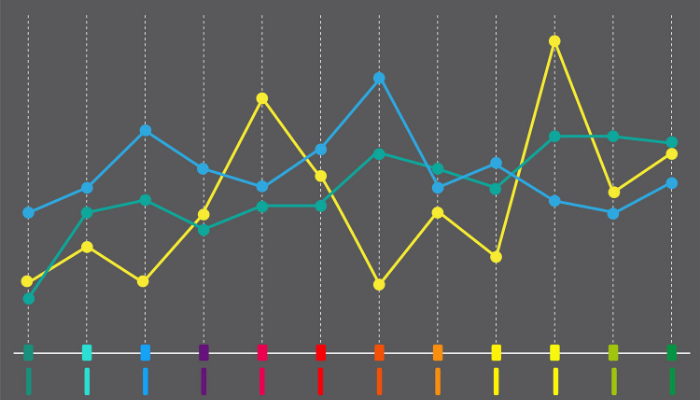In the last 4-6 months, the world has been upside-down. Up until recently, businesses have either had to shut down or, for the ones that can, run operations remotely. Businesses have come to terms with coronavirus and until a further vaccine is introduced, safety measures, healthcare, norms, etc. will remain in place. Since everything went out of control, HR professionals have seen an increase in their job responsibilities. The irregular nature of the situation has had HR dealing with a myriad of challenges. One of these many HR challenges in 2020 is performance management. Before now, HR professionals have working professional management approaches used as evaluation criteria for employee performance.
However, things took a sudden and unexpected turn. Many variables started to move quickly without warning, and companies had to adapt to all the changes in no time. The challenge for companies, nonetheless, regarding performance management is whether to change the performance management approach or not. Moreover, if it has to change, how much redesigning of performance management does HR need?
In this kind of situation, where organizations face new challenges, companies tend to look out for how their “peers” approach the situation. While this, in itself, isn’t a bad idea, dumping down the approach of another organization doesn’t always bode well. As far as the need for performance management redesign is concerned, there are logical approaches that can guide executives on how best to evaluate employee contributions and add to their professional growth. Also, these approaches will prevent business leaders from making impulsive decisions.
You might also be interested to read: The Transition To A Continuous Performance Management System
As mentioned earlier, things have taken a spin around its end in the last 4-6 months. With so many things moving around so quickly, HR must adapt to the situation immediately. To do this, HR has to alter/redesign certain aspects to accommodate the situation. However, while some things might need changing, others might not. The key to this is to identify whether a lot has changed in the company’s operating environment to justify a change. Therefore, before redesigning the performance management approach, companies must evaluate the necessity for the alteration.
For companies to evaluate the necessity for a change in their performance management technology, they need to understand the specific impact of the global shutdown on their operations. To do this, they should consider placing their organizations into any of these three broad categories:
- Damaged
Under this category, a company must be in an industry that has suffered severe, long-term damage from the global shutdown. It will not recover or be on a clear path to recovery by the end of 2020. Industries in this category may include airlines, hotels, restaurants, entertainment/leisure, and conferences. It also includes businesses whose economic viability depends on people’s proximity to each other.
- Shaken
For a company to fall under this category, it must have temporarily lost a significant percentage of its revenue. However, this loss of income will not disrupt business activity in the second half of 2020. Industries in this category may include manufacturers, portions of retail, professional services firms, and energy (oil and gas), among others.
- Thrived
Companies in this category fall under industries that either experienced little impact or thrived during the shutdowns. These include firms in health care and pharmaceuticals, technology and telecommunications, financial services, select consumer products, and the transportation/delivery services associated with them.
These categories reflect the specific impact of the global lockdown, not any systemic weaknesses that preceded it. For example, if your company is in brick-and-mortar retail, then your business most likely had some challenges before the shutdown. They also don’t factor in the common challenges that every industry suffered from the forced shift to working from home for most white-collar workers.
After companies complete the evaluation process, the rest is easy from there. The next step is to answer two fundamental questions. Once a company identifies which category it falls under, the answer to these questions will provide clarity on whether or not to alter performance management strategies. The questions are as follows:
- How and if they should adjust goals and;
- How to adjust the evaluation and reward of employees?
Performance management is a process that involves an appraisal, a review, and the rating of employee performance during the preceding year. Companies use this review of worker performance to determine employee effectiveness as it compares with peers in the same field. Also, since performance and compensation go hand-in-hand, best-in-class performance management is used to compute the rating used to justify an increase in a member of staff bonus and salary.
Aside from determining who deserves an increase in salary or bonus, companies use performance management to further an employee’s professional growth. At the beginning of a business cycle, every organization has a defined objective, and every department plays a role in achieving this. Consequently, every employee must meet a target. Performance management uses this as one of its evaluation criteria of employee contribution. And with the incentive of a bigger paycheck, employees are incentivized to grow professionally.
Also, performance management is a mechanism used by companies to get employee feedback. Essentially, performance management is an appraisal of company performance as much as it is a review of employee performance. During this process, the organization gets information that it can use to make improvements. The appraisal process unearths valuable information that borders on things such as employee needs, operational weaknesses, and strategy reevaluations that causes a shift in mindsets, all of which can improve organization performance.
The process of performance management starts a month or two after the appraisal cycle ends. An appraisal cycle can occur bi-annually or annually, depending on the organization’s policy. It can also depend on the calendar or financial year. Fundamentally, there is no generally defined timeline for when the appraisal cycle starts. Companies determine the period based on their needs; as such, the timing varies across companies.
References:
- How to manage performance management in 2020 by Marc Effron||June 11, 2020
- Performance management as an HR management concept by Management Study Guide
You might also be interested to read:
Related Topics:




